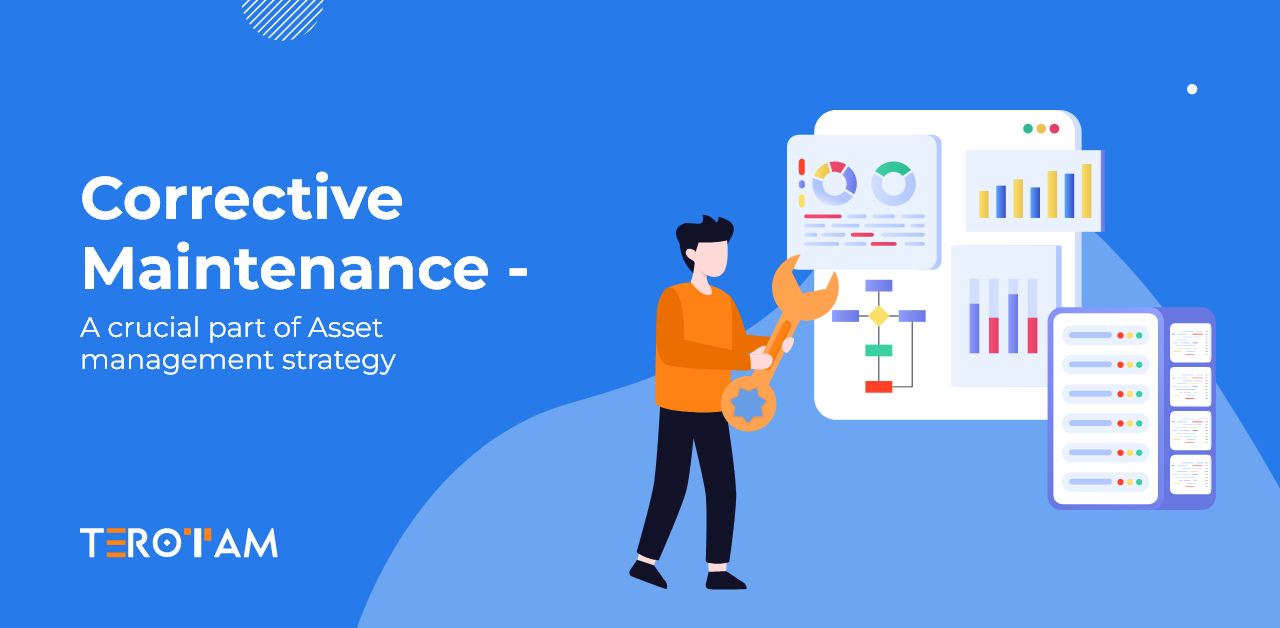Corrective maintenance is often viewed as a reactive, temporary fix within asset management, stepping in when equipment issues are already affecting operations. However, this approach to maintenance plays a more significant role than merely addressing malfunctions. Corrective maintenance can reveal hidden insights into asset performance, extend the longevity of equipment, and even streamline budget allocations—qualities that are less explored in traditional maintenance narratives.
In this article, we’ll examine the often-overlooked value of corrective maintenance, why it’s a critical layer in asset management, and how it contributes to a balanced maintenance strategy.
Rethinking Impact and Importance of Corrective Maintenance
Corrective maintenance handles emerging issues as they appear, targeting specific problems that may not have been detectable through routine inspections. Instead of viewing it as a “break-fix” method, a more strategic perspective reveals its adaptability and potential cost benefits.
For example, corrective maintenance in a manufacturing plant can prevent extensive disruptions by allowing for immediate, targeted responses that keep production on track. In industries where downtime has significant financial repercussions, corrective maintenance becomes essential for maintaining operational flow and avoiding costly shutdowns.
Real-Time Responses as Strategic Asset Control
Traditional asset management strategies often lean heavily on preventive maintenance, which can lead to over-maintenance or unplanned expenses. Corrective maintenance, on the other hand, lets companies address issues based on real-time equipment status, adapting responses based on actual wear and operational conditions.
In industries like utilities, corrective actions can be highly effective in prolonging the useful life of assets, such as turbines or transformers, by attending to problems only when there’s clear evidence of wear.
This approach allows for a more practical balance between keeping assets in operation and avoiding excessive, costly maintenance routines.
Corrective Maintenance Reveals Hidden Data Insights
Each corrective maintenance intervention provides data that can be invaluable for understanding asset behavior, failure trends, and usage patterns. By tracking the frequency, type, and cause of corrective actions, organizations gain visibility into where and how their assets are vulnerable.
Over time, these insights can inform adjustments to preventive maintenance schedules, equipment design, and operational practices.
For instance, in the mining sector, where machinery is subjected to extreme stress, data from corrective maintenance can help pinpoint failure-prone components, leading to design improvements that can dramatically reduce downtime.
Extending Asset Lifespans with Timely Interventions
For companies with expensive or hard-to-replace assets, corrective maintenance plays a critical role in extending the lifespan of equipment. Instead of automatically replacing or overhauling parts based on a fixed schedule, corrective actions address actual, on-the-ground conditions.
In the aviation industry, where parts are meticulously monitored for safety and performance, using corrective maintenance to manage wear as it appears can delay large-scale overhauls, ultimately stretching the lifecycle of costly equipment without compromising safety or reliability.
Cost Efficiency and Targeted Resource Allocation
A strict preventive maintenance approach can sometimes drain resources by over-inspecting or servicing assets that are in good working order. Corrective maintenance, however, ensures that resources are deployed only when necessary.
In asset-intensive sectors, such as heavy manufacturing or utilities, corrective maintenance allows for more flexible budgeting, as organizations can allocate funds for repairs when an actual need arises rather than in anticipation of every potential issue.
This targeted approach helps prevent unnecessary spending and supports more sustainable asset management.
Enhancing Safety in High-Risk Environments
In industries with high safety demands, such as oil and gas or chemical processing, corrective maintenance plays a critical role in ensuring a safe working environment. Sudden equipment malfunctions in these settings can lead to hazardous situations, making it crucial to address issues as soon as they’re detected.
Corrective maintenance helps organizations respond rapidly to potential safety risks, addressing emerging concerns without overhauling every piece of equipment.
This safety-oriented approach not only protects employees but also minimizes the risk of regulatory violations.
Corrective Maintenance and Predictive Technology: A Powerful Blended Approach
As technology advances, corrective maintenance is evolving alongside predictive tools like IoT sensors and real-time monitoring systems. IoT-enabled devices detect early signs of wear, allowing maintenance teams to respond before full-scale breakdowns occur.
For example, in sectors such as logistics, sensors installed in fleet vehicles can track performance indicators like tire pressure, engine temperature, and brake health, notifying operators of emerging issues before they escalate.
Blending corrective maintenance with predictive insights, empower companies to create a proactive yet flexible approach that minimizes both operational disruption and maintenance costs.
Critical Step Toward a Hybrid Maintenance Model for Optimal Performance
In recent years, many asset-intensive industries have adopted a hybrid maintenance approach, combining preventive and corrective strategies to create a balanced, cost-effective maintenance plan.
Corrective maintenance fits naturally within this hybrid model by serving as a responsive layer that targets critical areas based on real-world usage and wear conditions.
In an energy facility, for example, a hybrid approach ensures that critical equipment receives preventive attention while corrective actions address unanticipated failures, ultimately creating a more resilient maintenance strategy that improves reliability and controls costs.
Steps for Integrating Corrective Maintenance into an Asset Management Strategy
A well-implemented corrective maintenance strategy can elevate an organization’s entire asset management program. To maximize its impact, companies can focus on the following steps:
1. Implement Failure Tracking and Analysis Protocols
Detailed documentation of each corrective action, including root cause analysis, failure type, and downtime duration, enables maintenance teams to identify patterns that could inform preventive measures in the future.
2, Invest in Real-Time Monitoring Technologies
Leveraging IoT and condition-monitoring tools gives organizations real-time insight into asset health, helping identify potential issues early so that corrective actions can be scheduled strategically rather than reactively.
3. Train Maintenance Teams for Rapid, Effective Interventions
Skilled teams equipped with the right tools can quickly address malfunctions, ensuring corrective actions are efficient and effective. Training programs that focus on diagnostics and repair enable maintenance staff to respond promptly when issues arise.
4. Prioritize Assets by Criticality and Impact
Understanding which assets are mission-critical allows organizations to prioritize corrective maintenance for equipment that would cause the most disruption if it failed. This ensures that resources are used strategically, where they’re needed most.
5. Combine Predictive Analytics with Corrective Maintenance Planning
Predictive analytics can identify trends in equipment wear and failure, guiding corrective maintenance schedules in alignment with real-world asset conditions. This approach minimizes unexpected downtime and creates a more predictable maintenance budget.
The Strategic Value of Corrective Maintenance in Asset Management
Corrective maintenance goes beyond mere quick fixes, emerging as a powerful asset management tool that significantly enhances asset lifespan, operational stability, and cost management.
Addressing equipment issues based on real-world wear and failure data, corrective maintenance minimizes unnecessary interventions and enables smarter resource allocation, establishing it as an integral component of a balanced asset management strategy. Companies aiming for long-term asset performance and sustainability find that corrective maintenance elevates both efficiency and resilience within their maintenance model.
When paired with predictive techniques, corrective maintenance transforms into a flexible, data-driven process that adapts to the evolving conditions of each asset—enabling businesses to boost uptime, manage costs effectively, and prolong the life of their most vital equipment.
Concluding note
Corrective maintenance isn’t just about fixing issues as they arise—it’s about being smarter with how you manage your assets for the long run. It helps you keep operations running smoothly, extend asset life, and avoid unnecessary costs.
Curious about how this approach can transform your maintenance strategy? Get in touch with us at contact@terotam.com and let’s start a conversation about creating a more efficient and cost-effective asset management plan.








